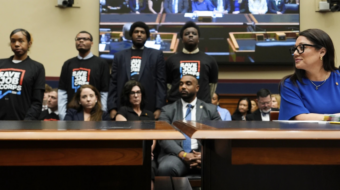
The U.S. Equal Employment Opportunity Commission (EEOC) has long been a cornerstone in upholding the civil rights of U.S. workers. Established under Title VII of the Civil Rights Act of 1964, the EEOC is a five-member, bipartisan commission appointed by the president to enforce federal laws against employment discrimination. The Trump administration, however, has taken actions that undermine the effectiveness of the EEOC through legally questionable firings and proposed changes to data collection that are key to the EEOC’s enforcement processes.
The long-term consequences of weakening the agency threaten not only economic equity and worker protections but also economic growth. In fact—after extrapolating from widely cited research on the impacts of reduced discrimination on GDP per capita growth—we estimate that reduced discrimination boosted average living standards by $4,932 per person since 1960. If we assume the EEOC’s role in reducing discrimination accounts for 10–25% of that growth, then the agency has helped to boost average living standards by $493 to $1,233 per person since 1960.
What does the EEOC do?
The EEOC enforces against discrimination based on race, sex, color, religion, national origin, age, and disability. In the years since the EEOC first opened its doors in 1965, the definition of sex discrimination has been expanded to include pregnancy, childbirth, transgender status, and sexual orientation. The law prohibits discrimination in areas of employment, including in recruitment, hiring, wages, job assignments, promotions, benefits, discipline, discharge, and layoffs.
The commission has the authority to investigate charges of discrimination against private employers with at least 15 employees, as well as state and local government employers. While most of these investigations are initiated by charges filed by individuals, EEOC commissioners may also initiate charges on their own initiative or based on the recommendation of any of the EEOC field offices throughout the country. If the EEOC finds that discrimination has occurred, they look to settle the charge. If a settlement can’t be reached, they have the authority to file a lawsuit to protect the rights of victims of discrimination, although very few cases are litigated.
Since 1997, the EEOC has averaged over 83,000 charge filings per year, as shown in Figure A. Race-based complaints are the most common type of discrimination charge, averaging approximately 29,000 annually since 1997. Sex-based charges follow closely behind, averaging approximately 25,222 charges annually. A single charge may include more than one type of discrimination, and over the last three decades, race- and sex-based charges have been included in 35% and 30% of all filings, respectively.

Headquartered in Washington, D.C., the EEOC operates 53 field offices nationwide, with a budget of $445 million for FY2024 and approximately 2,200 employees. When adjusted for inflation (2024 dollars), the EEOC’s budget declined slightly in the 2000s (–1.7%) before falling significantly in the 2010s (–11.9%). As shown in Figure B, this erosion in funding resulted in a long-term decline in staffing levels, despite the agency’s expanding enforcement responsibilities. While staffing levels increased between 2020 and 2024, the budget declined by 3.6%.
To support its enforcement efforts and identify patterns of discrimination, the EEOC requires all private employers with 100 or more employees and federal contractors with 50 or more employees to file an EEO-1 report, the nation’s only federally collected source of firm-level information on employment by race, ethnicity, sex, and job category. This data allows the EEOC, employers, researchers, and advocates to assess aggregate disparities in employment by key job categories and industries. This analysis informs the EEOC’s charge intakes and systemic enforcement, and aids in selecting commissioner’s charges and preparing special reports. The Office of Federal Contract Compliance Programs (OFCCP) also uses EEO-1 data to support enforcement of affirmative action plans for federal contractors.
How has the Trump administration weakened the EEOC?
The EEOC has been a persistent target of the Trump administration since his first term. In August 2017, the Trump administration moved to reverse the pay data rule approved at the end of the Obama administration. This pay data component was to be added to the 2017 EEO-1 form to aid the EEOC in assessing allegations of pay discrimination by collecting summary compensation information by gender and race from large businesses. Court-ordered reinstatement of the rule allowed EEOC pay data collection to continue briefly in 2019. While the Biden administration attempted to revive this new component to the EEO-1 form, it remains unlikely that pay data collection will continue under the current administration.

Adding to this erosion, Project 2025 outlined a plan to eliminate the EEO-1 form entirely. Doing so would severely undermine the EEOC’s enforcement capacity, stripping the agency of its ability to investigate and pursue remediation for the disparate impact of employers’ workplace policies. Under the Trump administration, the EEOC announced plans to move forward with the 2024 EEO-1 data collection, but for a shortened reporting period, without a non-binary option for reporting by sex and with warnings against “diversity, equity, and inclusion (DEI) discrimination.” This proposal is part of the Trump administration’s broader pattern of data erasure and censorship—particularly the suppression of federal statistics collected by race and gender—which limits transparency and accountability.
Further weakening the agency, Trump dismissed two EEOC commissioners as well as its general counsel just weeks into his second term—years before their appointments were set to expire. Trump is the first president to take such actions in the 60-year history of the EEOC—an independent federal agency designed to be free of presidential interference. As a result, the agency lost quorum on its bipartisan leadership panel. Without a quorum, the EEOC cannot take formal actions such as voting on rulemaking, issuing new policies, or rescinding outdated guidance—paralyzing some key functions of the commission. The legality of those firings is being challenged in court.
In the absence of this leadership, the Trump administration has redirected the EEOC’s priorities to focus more on investigating so-called DEI-motivated race and sex discrimination and anti-American national origin bias and discrimination. This restructuring of priorities threatens to turn the mission of the EEOC on its head by framing equity efforts intended to remedy decades of documented employment discrimination as discriminatory. These efforts, combined with attempts to deprive transgender workers of their rights, undermine decades of EEOC precedent in enforcement of workplace equity, ultimately harming the most vulnerable workers the agency was created to protect.
Why we need the EEOC
The framers of the Civil Rights Act of 1964 recognized that simply declaring employment discrimination illegal would not be sufficient. Rather, the effectiveness of that law would require an independent agency responsible for its enforcement. Since the EEOC opened its doors in 1965, the agency has been responsible for protecting all workers from employment and pay discrimination.
Weakening the agency puts every worker’s rights at risk, and the economy suffers as a result. Research shows that since the 1960s, the decline in workplace discrimination has contributed to a stronger economy and more inclusive labor force. Chang-Tai Hsieh et al. estimate that the convergence in occupations and wages of women and Black men relative to white men accounted for 41.5% of U.S. GDP per capita growth between 1960 and 2010. This convergence was largely the result of narrowing gaps in educational attainment and declining labor market discrimination, which expanded opportunities for women and Black men in higher-skilled occupations. For example, the share of Black Americans employed as officials and managers at EEO-1 reporting firms increased from less than 1% in 1966 to 6.9% in 2008. The share of women in that position grew from 9.4% to 38.6% over the same period. By 2022, the share of Black Americans and women employed as officials and managers at EEO-1 reporting firms had inched up to 8% and 41.8%, respectively.
Chang-Tai Hsieh et al. further estimate that reduced discrimination alone accounted for almost 8% of GDP per capita growth between 1960 and 2010. Given the modest change in occupational patterns since 2010, if we carry the economic impact of reduced discrimination through to 2024, that is an increase of $4,932 per person. While it is difficult to precisely measure the EEOC’s impact apart from other forces, assuming the agency’s role in reducing discrimination accounts for 10–25% of that growth, we estimate that the EEOC helped to boost average living standards by $493 to $1,233 per person from 1960 to 2024 (based on increased GDP per capita). In short, weakening the EEOC undermines both worker protections and economic growth.
Through regulatory enforcement, litigation, and data collection, the EEOC acts as a critical check on discriminatory workplace practices, ensuring fairness, accountability, and equal opportunity for all. As Trump’s threats to the EEOC’s capacity to function as an independent agency grow—whether through budget cuts, leadership vacancies, or the rollback of key tools like pay data collection—the stakes extend beyond individual civil rights. Undermining the agency erodes the infrastructure of workplace equity, dampens economic growth, and sends a signal that employment discrimination will go unchecked. Now more than ever, safeguarding the EEOC’s enforcement capacity and independence is essential to protecting workers and building an economy that works for everyone.
We hope you appreciated this article. At People’s World, we believe news and information should be free and accessible to all, but we need your help. Our journalism is free of corporate influence and paywalls because we are totally reader-supported. Only you, our readers and supporters, make this possible. If you enjoy reading People’s World and the stories we bring you, please support our work by donating or becoming a monthly sustainer today. Thank you!












